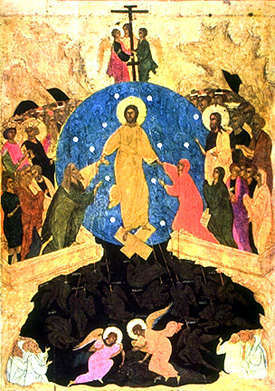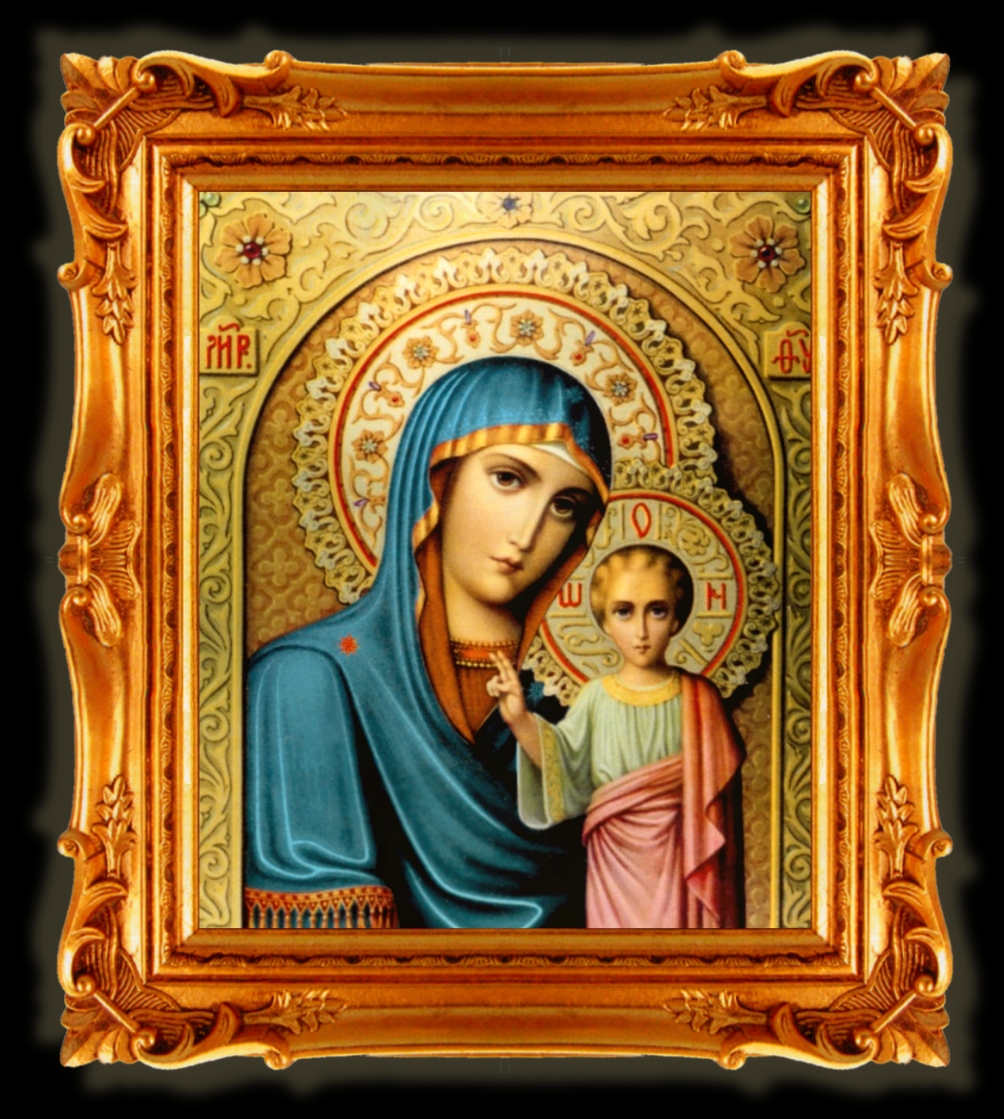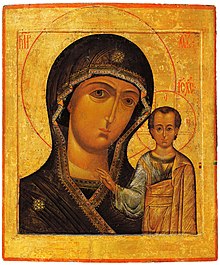I vilify persecutors. I must admit that this is a habit I have, and one that I have trouble breaking. When I hear of Kathleen Sebellius and the HHS contraceptive mandate, I vilify Ms. Sebelllius. When I hear of attacks on Nigerian Christians by Boko Haram, I vilify militant Muslims. Now, I don't say that they are going to hell: I know I can't judge that at all. Though I sometimes speak in generalizations (such as just talking about "Muslims" when I discuss teachings of the Qur'an made prominent by militant groups or "Jesuits" when I discuss the many heretical teachings of individual Jesuits throughout the past few decades), I know that they're generalizations: not all Muslims want to kill me or subdue me with a jizya, and not every Jesuit is a Resurrection-denying, "historical Jesus"-promoting heretic. Yet I have this terrible habit of vilifying those who commit manifest evil acts, particularly high-profile ones that they seem proud of.
The thing is, in my prayer last night, I came across this line from St. Paul that smacked me upside the head in this area:
That verse made me realize that I need to try to change. Though I will of course not stop pointing out evil acts, I will make an effort to stop vilifying those who perform them. I will try to hold faster to that great dictum of St. Augustine: hate the sin, love the sinner. One idea I have for how to love those who commit evil acts is taken from a few verses later in St. Paul's chain of exhortations:
What is it that those who commit evil deeds seem to be hungering for and thirsting for the most? The Truth, that is, Jesus Christ. Thus I have resolved to pray for those who commit evil acts, especially those who persecute Christians (either directly or indirectly). To do this, I have decided to write a short litany in the style of the litanies from the Divine Liturgy of St. John Chrysostom. Feel free to take this idea and switch out the petitions for anyone you specifically want to pray for, and feel free to make it longer. I know I will not keep the same list of petitions forever. I hope that you will pray this with me, and I hope that you will pray for me, that I may be more charitable and less vilifying.
In peace, let us pray to the Lord. Lord, have mercy.
For our President, Barack Obama, and for all elected authorities, let us pray to the Lord. Lord, have mercy.
For Kathleen Sebellius and the Department of Health and Human Services, let us pray to the Lord. Lord, have mercy.
For the courts of the United States of America, let us pray to the Lord. Lord, have mercy.
For Planned Parenthood and for all abortionists and clinics, let us pray to the Lord. Lord, have mercy.
For those who wish to redefine marriage, let us pray to the Lord. Lord, have mercy.
For those who wish to silence Christians, let us pray to the Lord. Lord, have mercy.
For the government of Britain, let us pray to the Lord. Lord, have mercy.
For all governments persecuting Christians, let us pray to the Lord. Lord, have mercy.
For the Muslim Brotherhood of Egypt, let us pray to the Lord. Lord, have mercy.
For Boko Haram, let us pray to the Lord. Lord, have mercy.
For the officials in Iraq, let us pray to the Lord. Lord, have mercy.
For the government of Saudi Arabia, let us pray to the Lord. Lord, have mercy.
For persecutors of Christians in Sudan, let us pray to the Lord. Lord, have mercy.
For practitioners of sharia law, let us pray to the Lord. Lord, have mercy.
For blasphemers, heretics, apostates, and schismatics, let us pray to the Lord. Lord, have mercy.
For atheists and secularists, let us pray to the Lord. Lord, have mercy.
For all persecutors of Christians in any respect, let us pray to the Lord. Lord, have mercy.
Protect us, save us, have mercy on us, and preserve us, O God, by Your grace. Lord, have mercy.
Remembering our most holy, most pure, most blessed and glorious Lady, the Mother of God and ever-Virgin Mary with all the saints, let us commit ourselves and one another, and our whole life, to Christ, our God. To You, O Lord.
I hope this litany (or at least the concept of it) helps you. Again, please pray for me, that I may grow in charity, and pray for persecutors of Christians, that they may come to the Way, the Truth, and the Life, Our Lord Jesus Christ, Son of God. Let us end by invoking the prayers of St. Stephen, who prayed as he was martyred, "Lord, do not hold this sin against them" (Acts 7:60). Thank you for reading, and God Bless.
St. Stephen the Protomartyr, pray for us!
Nota Bene: All Scripture quotes are from the Revised Standard Version: Catholic Edition. The litany is based off of the Litany of Peace from the Divine Liturgy of St. John Chrysostom (with the prayers in italics taken directly from the liturgy). My source was the Study Text of the Ruthenian Divine Liturgy of St. John Chrysostom, with the prayers taken from the 2009 Pastoral Update (see the link to the pdf in the first post on the page I linked to).
The thing is, in my prayer last night, I came across this line from St. Paul that smacked me upside the head in this area:
"Bless those who persecute you; bless and do not curse them" (Rom 12:14).
That verse made me realize that I need to try to change. Though I will of course not stop pointing out evil acts, I will make an effort to stop vilifying those who perform them. I will try to hold faster to that great dictum of St. Augustine: hate the sin, love the sinner. One idea I have for how to love those who commit evil acts is taken from a few verses later in St. Paul's chain of exhortations:
"'If your enemy is hungry, feed him; if he is thirsty, give him drink; for by so doing you will heap burning coals upon his head.' Do not be overcome by evil, but overcome evil with good" (Rom 12:20-21).
What is it that those who commit evil deeds seem to be hungering for and thirsting for the most? The Truth, that is, Jesus Christ. Thus I have resolved to pray for those who commit evil acts, especially those who persecute Christians (either directly or indirectly). To do this, I have decided to write a short litany in the style of the litanies from the Divine Liturgy of St. John Chrysostom. Feel free to take this idea and switch out the petitions for anyone you specifically want to pray for, and feel free to make it longer. I know I will not keep the same list of petitions forever. I hope that you will pray this with me, and I hope that you will pray for me, that I may be more charitable and less vilifying.
In peace, let us pray to the Lord. Lord, have mercy.
For our President, Barack Obama, and for all elected authorities, let us pray to the Lord. Lord, have mercy.
For Kathleen Sebellius and the Department of Health and Human Services, let us pray to the Lord. Lord, have mercy.
For the courts of the United States of America, let us pray to the Lord. Lord, have mercy.
For Planned Parenthood and for all abortionists and clinics, let us pray to the Lord. Lord, have mercy.
For those who wish to redefine marriage, let us pray to the Lord. Lord, have mercy.
For those who wish to silence Christians, let us pray to the Lord. Lord, have mercy.
For the government of Britain, let us pray to the Lord. Lord, have mercy.
For all governments persecuting Christians, let us pray to the Lord. Lord, have mercy.
For the Muslim Brotherhood of Egypt, let us pray to the Lord. Lord, have mercy.
For Boko Haram, let us pray to the Lord. Lord, have mercy.
For the officials in Iraq, let us pray to the Lord. Lord, have mercy.
For the government of Saudi Arabia, let us pray to the Lord. Lord, have mercy.
For persecutors of Christians in Sudan, let us pray to the Lord. Lord, have mercy.
For practitioners of sharia law, let us pray to the Lord. Lord, have mercy.
For blasphemers, heretics, apostates, and schismatics, let us pray to the Lord. Lord, have mercy.
For atheists and secularists, let us pray to the Lord. Lord, have mercy.
For all persecutors of Christians in any respect, let us pray to the Lord. Lord, have mercy.
Protect us, save us, have mercy on us, and preserve us, O God, by Your grace. Lord, have mercy.
Remembering our most holy, most pure, most blessed and glorious Lady, the Mother of God and ever-Virgin Mary with all the saints, let us commit ourselves and one another, and our whole life, to Christ, our God. To You, O Lord.
I hope this litany (or at least the concept of it) helps you. Again, please pray for me, that I may grow in charity, and pray for persecutors of Christians, that they may come to the Way, the Truth, and the Life, Our Lord Jesus Christ, Son of God. Let us end by invoking the prayers of St. Stephen, who prayed as he was martyred, "Lord, do not hold this sin against them" (Acts 7:60). Thank you for reading, and God Bless.
St. Stephen the Protomartyr, pray for us!
Nota Bene: All Scripture quotes are from the Revised Standard Version: Catholic Edition. The litany is based off of the Litany of Peace from the Divine Liturgy of St. John Chrysostom (with the prayers in italics taken directly from the liturgy). My source was the Study Text of the Ruthenian Divine Liturgy of St. John Chrysostom, with the prayers taken from the 2009 Pastoral Update (see the link to the pdf in the first post on the page I linked to).


















